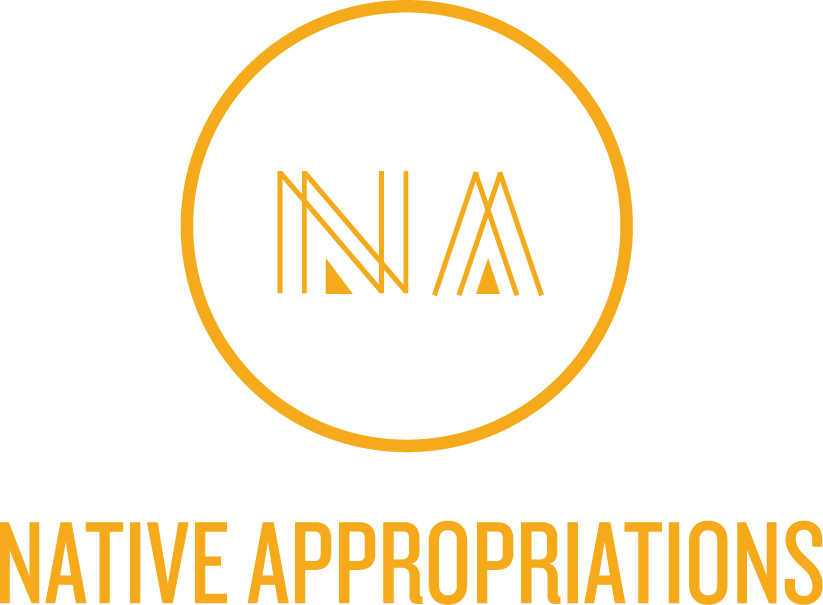Jezebel had a great post today highlighting Rachel Zoe’s newest “Zoe Report” entitled “Gone Native”. Zoe points to the work of Lindsay Thornburg, a designer who makes cloaks out of Pendleton fabrics (both vintage and contemporary) with names like “Navajo Nile” and “Walking Rock”. Zoe’s text reads:
“As my newest outerwear crush, I am blown away by each one of Thornburg’s ethnic-inspired cloaks. They are a brilliant interpretation of the current tribal trend which will carry over from winter as a hugely coveted look for spring.”
Ethnic-inspired? Current tribal trend? What exactly does that even mean?
Here are some of Thornburg’s designs:
Also included at the bottom of the Zoe Report (presumably for those of us who can’t afford a $950 cloak) is this Electric Navajo Poncho from Forever 21:
I always find it hard to articulate why it is that these things are so offensive. Jezebel commenter roxanneismyalterego puts part of it into perspective:
“Calling mass produced clothing “Native” or “tribal” devalues the culture of whichever group the clothing is inspired by. In a sense, you’re saying, “it doesn’t matter WHICH native or tribal group this was inspired by, it’s just not WHITE.”
Which is definitely a piece of the issue. A major problem with depictions of “Native” in reference to American Indians is the reduction of 500+ tribes, each with their unique history, culture, language, and traditions into one stereotyped image, one that we as Native people know well: the buckskin-clad, feather-headdress-wearing, face-painted, Plains-inspired Indian. They also only ever seem to appropriate three tribes in terms of names and “inspiration”—Navajo (or Navaho if you’re Urban Outfitters), Sioux (which is another antiquated name and represents a group of tribes, not just one), and Cherokee (believe me, I KNOW about that one). You never seem to see a Nisqually V-neck or a Wampanoag jewelry holder.
Dodai Stewart, the author of the Jezebel post, pointed to another great post on Racialicious to shut down an ill-informed commenter, and it really breaks down the problems with cultural appropriations. It’s all about oppression, power, and colonialism. You can read the whole post here.
some of the key quotes: https://www.careddi.com/
“‘What’s so wrong with being inspired by another culture?’ Nothing, really. But “inspiration” drawn from a historically oppressed culture comes with a tangle of baggage born of generations of marginalization and bias.”
“A Japanese teen wearing a t-shirt emblazoned with the logo of a big American company is not the same as Madonna sporting a bindi as part of her latest reinvention. The difference is history and power. Colonization has made Western Anglo culture supreme–powerful and coveted. It is understood in its diversity and nuance as other cultures can only hope to be. Ignorance of culture that is a burden to Asians, African and indigenous peoples, is unknown to most European descendants or at least lacks the same negative impact.”
“It matters who is doing the appropriating. If a dominant culture fancies some random element (a mode of dress, a manner of speaking, a style of music) of my culture interesting or exotic, but otherwise disdains my being and seeks to marginalize me, it is surely an insult.”
As recently as our parents and grandparents’ generations, Native children were forcibly sent to government run boarding schools founded on a policy of “kill the Indian, save the man”, where they were taught their culture and traditions were wrong and backward, and beaten if they spoke their tribal languages. Until 1978 with the passage of The American Indian Religious Freedom Act, Native peoples in the US were not even allowed to practice their traditional ceremonies without fear of persecution. Indian reservations are some the poorest places in the US with the highest levels of unemployment. So, Rachel Zoe, the problem is that behind that trendy poncho there are hundreds of years of cultural genocide and ongoing oppression at play, and the fact that you deem it worthy of inclusion in your blog doesn’t and can’t erase that.
The Jezebel post also refers to many other recent fashion campaigns and examples from companies like American Apparel, Victoria’s Secret, and yes, even the hipster snuggie I posted about earlier. Let’s hope this trend is one that goes the way of ill-fated trends of yesteryear like overalls and dying your hair with kool-aid.
Jezebel post: http://jezebel.com/5450961/rachel-zoe-pronounces-tribal-trend-so-hot-right-now
Zoe Report: http://www.rachelzoe.com/lindsey-thornburg-cloak
Lindsay Thornburg’s webpage: http://www.lindseythornburg.com/store.html
Racialicious post: http://www.racialicious.com/2008/09/18/cultural-appropriation-homage-or-insult/
Wikipedia entry on Cultural Appropriation (a good background read): http://en.wikipedia.org/wiki/Cultural_appropriation
(Thanks to Charlotte R. for the tip about the Jezebel article!)



